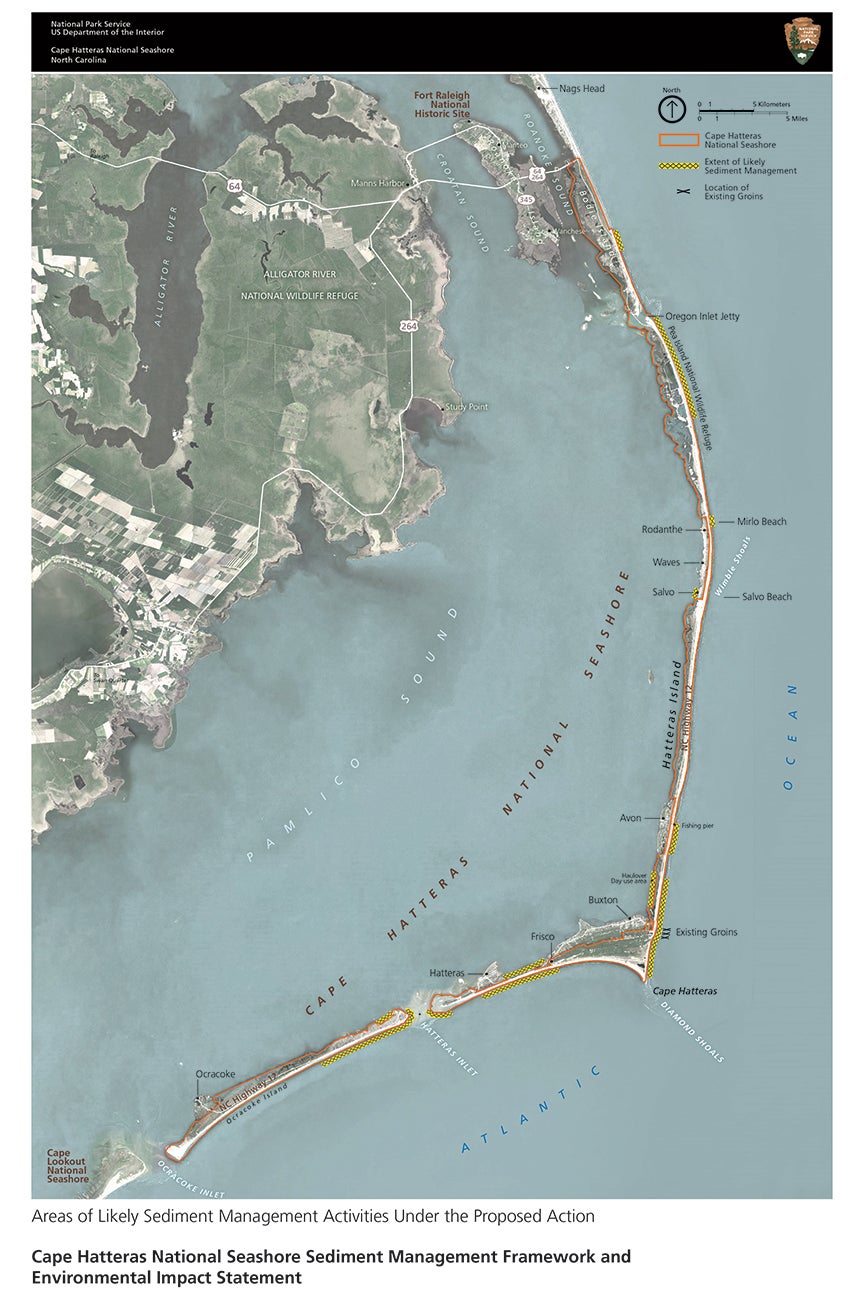Building a framework for sand management for national seashore is underway
Published 10:31 am Wednesday, April 22, 2020

- Courtesy Cape Hatteras National Seashore
|
Getting your Trinity Audio player ready...
|
On Monday, the National Park Service held the first of four webinars on its work to create a framework for sand management in the Cape Hatteras National Seashore.
The online presentation attracted 53 people and, after about a 20-minute presentation, 21 questions from those attendees. The technology did not falter.
Developing the framework’s Environmental Impact Statement is on a very aggressive schedule. The process aims to be finished a year from now, in spring 2021.
The final document, if completed, could possibly be used by the National Park Service to issue a Special Use Permit for the Buxton Beach Renourishment project also slated for Spring 2021.
Once finished, the Environmental Impact Statement will list conditions that must be met to nourish beaches, restore habitat, reconstruct dunes or fill breaches. The document will be applied to requests for Special Use Permits for work on Cape Hatteras National Seashore edges on the Atlantic Ocean, the Pamlico Sound and Oregon and Hatteras inlets.
The project is in the scoping phase, which includes a public outreach effort to identify alternatives, issues and data sources for inclusion in the final document.
National Park Service and cooperating agencies identified five initial topics to be explored in the Environmental Impact Statement: Littoral Processes and Barrier Island Morphology, Benthic Organisms and Essential Fish Habitat, Sea Turtles, Listed Shorebird Species and Structures and Infrastructure, which will address public and private impacts.
Impact topics preliminarily dismissed are Offshore Littoral Processes and Barrier Island Morphology, Water Quality, Marine Mammals, Fish and Sturgeon, Other Wildlife and Wildlife Habitat, Seabeach Amaranth and Cultural Resources.
Now is the time to ask questions, suggest topics and propose alternatives. Upcoming webinars are scheduled for Wednesday, April 22 from 6 to 7 p.m. and Thursday, April 23 from 5:30 to 6:30 p.m. To register for the webinar, go to the Facebook page for Cape Hatteras National Seashore.
At Monday’s virtual gathering, queries generated additional information about:
– Buxton groins: Are not proposed to be included. Dare County is working on the groin issue separate from the Buxton Beach Nourishment project.
– NPS implementing beach nourishment: “Likely not,” said David Hallac, superintendent of National Parks of Eastern North Carolina. The costs are prohibitive. Framework will be used to issue permits for Dare County and North Carolina Department of Transportation. If the project was about restoring habitat, the National Park Service may enter a partnership.
– Using beach driving permit fees for beach nourishment by the park service. Unlikely. Hallac said it currently costs about $3 million per year to administer the beach driving plan and more to make improvements for access and maintenance. “We use all the funding.”
– Alternative details. Two alternatives are preliminary: the no action alternative A, which is required; and Alternative B, which proposes a two-project limit per year. What if an emergency project is needed? The option will be considered.
– Island stabilization. Rebecca Beavers, coastal geology and adaptation coordinator, National Park Service (Denver), responded that a variety of options would be examined including stabilization.
Present at the first webinar and introduced were:
David Hallac, superintendent, National Parks of Eastern North Carolina.
Kelly Daigle, environmental protection specialist for the Environmental Quality Division, Planning and Compliance Division of the National Park Service.
Sabrina Henry, environmental protection specialist, Cape Hatteras/Fort Raleigh/Wright Brothers.
Tracy Ziegler, chief of Resource Management and Science, National Parks of Eastern North Carolina.
Mark Dowdle, deputy superintendent, Cape Hatteras/Fort Raleigh/Wright Brothers (Outer Banks Group).
Jami Hammond, regional environmental coordinator, South Atlantic-Gulf Region (Atlanta).
Linda York, coastal geomorphologist, South Atlantic-Gulf Region (Atlanta).
Rebecca Beavers, coastal geology and adaptation coordinator, National Park Service (Denver).
Henry Crawford, geomorphology assistant, National Park Service (Denver).
Tracy Littel, consultant with VHB (Vanasse Hangen Brustlin, Inc.).
The home page for the Environmental Impact Statement project is parkplanning.nps.gov/CAHASediment. Posted documents include the slide presentation for the webinars, a map showing potential locations for sediment management and the current project newsletter. Documents generated by this project will be posted to this site.
Comments are to be submitted electronically at parkplanning.nps.gov/CAHASediment, the preferred method, or mailed to Superintendent, Cape Hatteras National Seashore, 1401 National Park Drive, Manteo, NC 27954. Deadline to submit comments is May 10, 2020.
READ ABOUT MORE NEWS AND EVENTS HERE.




